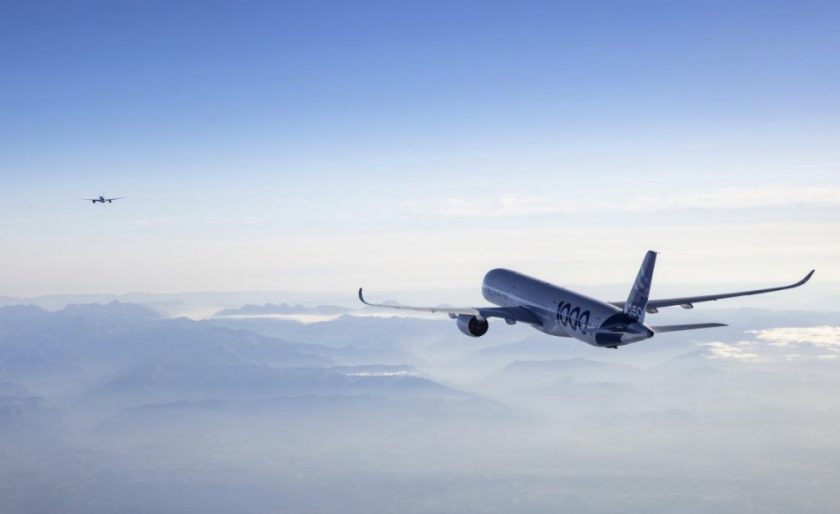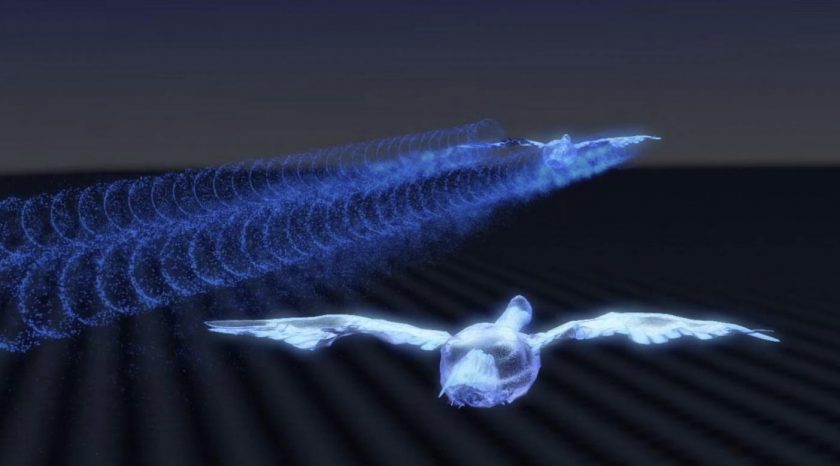V-shaped formations of migrating geese helping Airbus to reduce CO2 emissions and save fuel

Airbus engineers are getting inspiration from the animal kingdom by studying the V-shaped formations of migrating geese in a bid to reduce CO2 and save fuel.
Flocks of planes could be winging their way together across oceans in the same way as geese do when they migrate, the reduced air resistance would cut CO2 emissions, between 3 and 4 million tons per year on long haul operations.
Airbus performed the first long-haul demonstration earlier this week of a formation flight between France and Canada, as part of the fello’fly project.
Did you happen to spot those two #A350 flying together on @flightradar24? Here’s a slightly different view, for your eyes only 😉. “Fello’w” us tomorrow for more! pic.twitter.com/qMUlZCHL6O
— Airbus (@Airbus) November 8, 2021
Two A350 aircraft flying at three kilometres apart took off from Toulouse and flew to Montreal, over 6 tons of CO2 emissions were saved on the trip, confirming the potential for more than a 5% fuel saving on long-haul flights.
Flight control systems developed by Airbus which position the follower aircraft safely in the wake updraft of the leader aircraft allowing it to reduce engine thrust and reduce fuel consumption.
Airbus says a similar principle can be observed with large migrating birds such as geese, which fly together in a distinct V-shaped formation.
Some large birds, such as geese, fly in V formation, the shape helps the flock to make better progress.
The front bird breaks up the wall of air that the flock flies into, this leaves a wake of swirling air behind, which helps give a lift to the next bird along.
In oceanic airspace, two aircraft typically need to be 30 to 50 nautical miles (55 to 90 kilometres) apart, according to today’s regulations.
However, during fello’fly operations, the separation is reduced to 1.5 nautical miles (3 kilometres) to reap the full benefits of wake-energy retrieval.

Image: Airbus
Sabine Klauke, Chief Technical Officer at Airbus declared: “This demonstration flight is a concrete example of our commitment to making our decarbonisation roadmap a reality.”
“It also speaks to how collaboration across the industry will be key to making this happen.”
“We have received a strong level of support for this project from our airline and air traffic partners, plus regulators.”
“The opportunity to get this deployed for passenger aircraft around the middle of this decade is very promising.”
“Imagine the potential if fello’fly was deployed across the industry!”
Pilots from Airbus partner airlines SAS Scandinavian Airlines and Frenchbee witnessed the transatlantic flight onboard as observers.
The flight was made possible by Airbus and its air traffic management partners and navigation service providers (DSNA, NATS, NAV CANADA, Eurocontrol and IAA), with the support of the DGAC, who together proved that wake energy retrieval flight technology leveraged in a fello’fly flight can be achieved without compromising safety.
The demonstration also shows how fello’fly operations could significantly boost environmental performance of commercial aircraft and contribute to the aviation industry’s decarbonisation targets in the immediate term.
Airbus says the “next step is to get the support of the authorities so that this new operational concept can be certified, and ultimately enable airlines to reduce their fuel burn and CO2 emissions.”
Spotted something? Got a story? Email: [email protected]
Latest News
